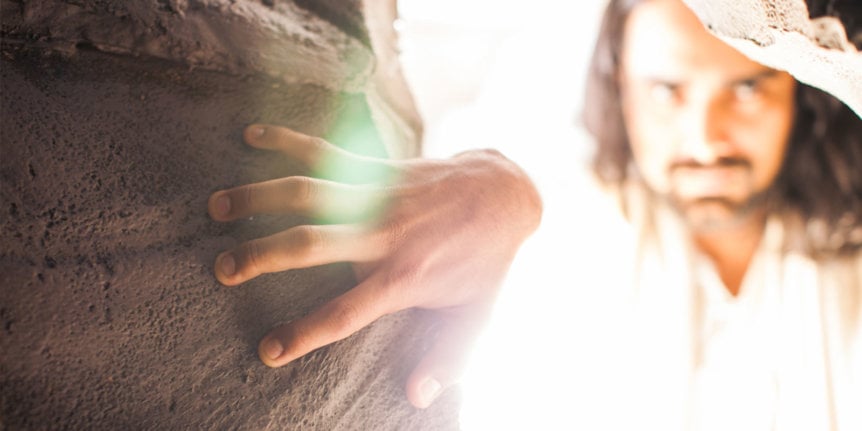Not only does the empty tomb point to Jesus’ resurrection, the eyewitnesses do so as well. Verse 8 tells us that after the women encountered the angel who told them Jesus had risen, they “ran to tell His disciples.” The disciples would also see the resurrected Jesus, and they had no doubt whatsoever that He is alive. Need evidence? Look at their lives.
Consider the mind-set of the disciples before Jesus’ crucifixion. They believed they had found the leader, and they just knew He was going to usher them into a life of both glory and power. This was the man who did the miraculous. He fed thousands, calmed the sea, cast out demons, and astounded the brightest intellectuals with His teaching. This was their king.
But Jesus began to talk about His impending death. The disciples didn’t understand it, and on one occasion, James and John changed the subject to something more “positive,” like ruling, authority, and crowns. They asked Jesus if He would let them sit on each side of Him when He reached His place of glory. They wanted dibs on sharing His honor. (See Mark 10:32-37).
Jesus knew what awaited Him in Jerusalem, so He asked if they were able to drink the same cup He was going to drink. They whole-heartedly agreed they could; after all, how bad could that cup be for the man who was about to become king?
It wouldn’t be too long, though, before they would discover how bad that cup was. In fact, even Jesus prayed to let that cup pass from Him if God were willing (Matt. 26:39). The cup Jesus was preparing to drink was a bitter one indeed.
When Jesus was arrested in the garden, His once proud disciples scattered in fear (v. 56). Suddenly they didn’t want to drink the same cup, so they ran. They all abandoned Him. They just couldn’t see how dying was any way to become a king.
But then came Sunday.
The Sunday Jesus rose from the dead made all the difference in the world. As a matter of fact, it made all the difference for the world. Sunday was when the disciples’ eyes were opened and they learned death couldn’t contain Jesus. Over the next 40 days, Jesus appeared to the disciples and many others—up to 500 people at one time—in various settings (1 Cor. 15:5-8). Those who had seen Him die now saw Him live, walk, talk, and eat. And the reason why we can be assured of
this is because history validates this truth with how the disciples lived … and died.
Prior to seeing Jesus Christ alive, His disciples trembled, ran away, and hid. Yet after they witnessed the resurrected Lord and filled with His Holy Spirit, they boldly followed Him and willingly drank of the cup that was His.
James, one of the two who said he was willing to drink the cup when asked by Jesus (Luke 10:38-39), was the first of the 12 apostles to die for His belief in the resurrected Jesus. The Jews in power despised men like James who were unrelenting in their claim that Christ had risen from the dead, so King Herod, in an attempt to please the Jews, killed James with a sword (Acts 12:1).
Judas Iscariot, of course, died by his own hand soon after betraying Jesus to the authorities for 30 pieces of silver (Matt. 27:3-9; Luke 22:1-6). All the other original eleven apostles, except for John, were killed because of their commitment to Jesus. While we have more historical evidence of the martyrdom of some of the apostles than of others, history records in some form or fashion that all died a martyr’s death (except for John, who was exiled onto an island where he died). The exact details differ regarding each death, but one thing remains the same: they all died for teaching and proclaiming Jesus Christ as the resurrected and living Savior.
People will go to great lengths for high-minded notions or ideals. But who would willingly die for a lie? But the disciples died for an undeniable truth. They saw Jesus alive after He had been crucified and buried. And because they did, they knew that death would not be the end for them either. Jesus had come to give eternal life. That was the confident hope in which they died, and it is the same confident hope in which we are to live.

